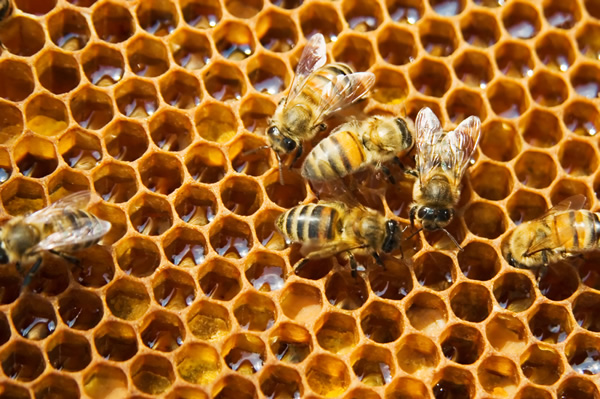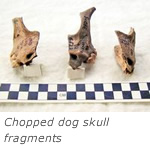
Rolling on the river ...
Carolina Naturally is read in 191 countries around the world daily.
Today is National Pizza Party Day
Don't forget to visit our sister blog!

The bill is being pushed by the North Carolina Automobile Dealers Association, a trade group representing the state’s franchised dealerships. Its sponsor is state Sen. Tom Apodaca, a Republican from Henderson, who has said the goal is to prevent unfair competition between manufacturers and dealers. What makes it “unfair competition” as opposed to plain-old “competition” — something Republicans are typically inclined to favor — is not entirely clear.



“These gun control activists, they can always pick the most recent event,” he said. “If you look back through history, there’s a long string of Newtown, Aurora, keep the list going. Under their analysis, you’d never sell a gun because someone got shot in recent history.”The firearms association head was blissfully unaware of the irony of his statement.

Written by Christ Hedges for Truthdig.
"Those who retreat into fantasy cannot be engaged in rational discussion, for fantasy is all that is left of their tattered self-esteem. When their myths are attacked as untrue it triggers not a discussion of facts and evidence but a ferocious emotional backlash."










 Do you think that just because you're a non-smoker staying in non-smoking
room in a hotel, you're safe from cigarette byproducts? Think again:
Do you think that just because you're a non-smoker staying in non-smoking
room in a hotel, you're safe from cigarette byproducts? Think again:
Non-smoking hotel rooms generally contained more third-hand smoke when they were part of hotels that allowed smoking in other, designated rooms. They had, on average, twice the amount of nicotine on surfaces and seven times as much 3EP (another cigarette byproduct) in the air. In smoking-permitted rooms, of course, the presence of these contaminants was much higher.Lindsay Abrams of The Atlantic summarizes the study: Here | The paper over at Tobacco Control
The women, after spending the night in a hotel that permitted smoking, even after requesting a non-smoking room, the next morning had significantly more nicotine on their fingers, and five to six times the amount of cotinine -- a biomarker of second-hand smoke exposure -- in their urine.

Jaime Awe, head of the Belize Institute of Archaeology, said the destruction was detected late last week.Despite the fact that the structure was on private land, all pre-Hispanic ruins are protected by the Belizean government; currently criminal charges against the construction company are being investigated.
“It’s a feeling of Incredible disbelief because of the ignorance and the insensitivity … they were using this for road fill,” Awe said in a statement picked up by Mail Online. “It’s like being punched in the stomach, it’s just so horrendous.”
The pyramid also sat in the middle of a privately-owned sugar cane field, and while it lacked the even stone sides seen in better-preserved pyramids, the mistake should not have occurred, Awe said. “These guys knew that this was an ancient structure. It’s just bloody laziness.”
Awe explained that it’s “mind-boggling” just how ignorant this construction firm could have been. What took years for ancient Mayans to build, using stone tools and materials from stone quarries, took only minutes for modern-day construction workers to undo using sophisticated equipment.
Norman Hammond, an emeritus professor of archaeology at Boston University (BU) who used to do research in the region in the 1980s, said Mayan ruins have been targeted in the past by workers seeking materials.Others have found the destruction of the Nohmul complex particularly egregious, as it was a large and very obvious structure, tall and covering a significant area of flat land. In other word, impossible to miss.
He told Mail Online via email that destroying Mayan ruins for construction materials is “an endemic problem in Belize (the whole of the San Estevan center has gone, both of the major pyramids at Louisville, other structures at Nohmul, many smaller sites), but this sounds like the biggest yet.”
It is a disturbing scenario, added Arlen Chase, chairman of the Department of Anthropology at the University of Central Florida (UCF). But “there is only a very limited infrastructure in Belize that can be applied to cultural heritage management. Unfortunately, they [destruction of sites] are all too common, but not usually in the center of a large Maya site,” he noted.Others mourn the specific and irrevocable loss of historic structures the speak to the history of the people and the place. The Nohmul complex was certainly one of those. It was first noted in 1887 by Europeans traveling the region; discovered in a private field in what is called the Orange Walk District, it is spread out over a 12-square mile area and was likely the residence for around 40,000 Mayans during the era of 500 – 250 BC. Its vastness, noted by many stunned by its destruction, made it hard to miss: it was comprised of duel structure clusters abutted by plazas and walking areas and traversed by a overhead causeway, set atop a very flat area of land. Despite comments to the contrary by the construction company, it was unmissable.

Francisco Estrada-Belli, a professor at Tulane University’s Anthropology Department, said, “I don’t think I am exaggerating if I say that every day a Maya mound is being destroyed for construction in one of the countries where the Maya lived.And that’s the result many would like to see. For now the excavation has been halted but clearly it’s too little, too late. Both the landowner and the construction company, D-Mar Construction, are being investigated. The company owner, Denny Grijalva, who is also running for a legislative seat in a local election, claims he “knew nothing about the project” and told reporters to speak to his foreman; no information was forthcoming.
“Unfortunately, this destruction of our heritage is irreversible but many don’t take it seriously,” he added. “The only way to stop it is by showing that it is a major crime and people can and will go to jail for it.” [Source]
“We can’t salvage what has happened out here… It is an incredible display of ignorance. I am appalled.” John Morris, the Institute of Archaeology.Here’s the video:

For bees to assemble a honeycomb the way bees actually do it, it's simpler for each cell to be exactly the same. If the sides are all equal — "perfectly" hexagonal — every cell fits tight with every other cell. Everybody can pitch in. That way, a honeycomb is basically an easy jigsaw puzzle. All the parts fit.
OK, that explains why honeycomb cells are same-sized. But back to our first question: Why the preference for hexagons? Is there something special about a six-sided shape?
Some shapes you know right away aren't good. A honeycomb built from spheres would have little spaces between each unit ...
... creating gaps that would need extra wax for patching. So can see why a honeycomb built from spheres wouldn't be ideal. Pentagons, octagons also produce gaps. What's better?
"It is a mathematical truth," Lightman writes, "that there are only three geometrical figures with equal sides that can fit together on a flat surface without leaving gaps: equilateral triangles, squares and hexagons."
So which to choose? The triangle? The square? Or the hexagon? Which one is best? Here's where our Roman, Marcus Terentius Varro made his great contribution. His "conjecture" — and that's what it was, a mathematical guess — proposed that a structure built from hexagons is probably a wee bit more compact than a structure built from squares or triangles. A hexagonal honeycomb, he thought, would have "the smallest total perimeter." He couldn't prove it mathematically, but that's what he thought.




















 In
early Russia, dogs weren't just man's best friends - they were also a crucial
step in an ancient initiation rites that turn boys into warriors:
In
early Russia, dogs weren't just man's best friends - they were also a crucial
step in an ancient initiation rites that turn boys into warriors:
At the age of eight, the boys were sent to ritualists, who bathed them, shaved their heads, and gave them animal skins to wear. Eight years later, the initiates underwent a midwinter ceremony in which they ritually died and journeyed to the underworld. After this, the boys left their homes and families, painted their bodies black, donned a dog-skin cloak, and joined a band of warriors.National Geographic News has the story: Here.
Brown and Anthony think that similar rites may have taken place at Krasnosamarskoe at the onset of the raiding season, which ran from the winter solstice to the summer solstice. And they speculate that part of the ceremony required the boys to kill their own dogs. The dead canines ranged in age from 7 to 12 years, suggesting that they were longtime companions—possibly even hounds raised with the boys from birth.
"That makes a lot of sense," concludes Brown. To take on the mantle of a warrior, an innocent boy had to become a killer.





